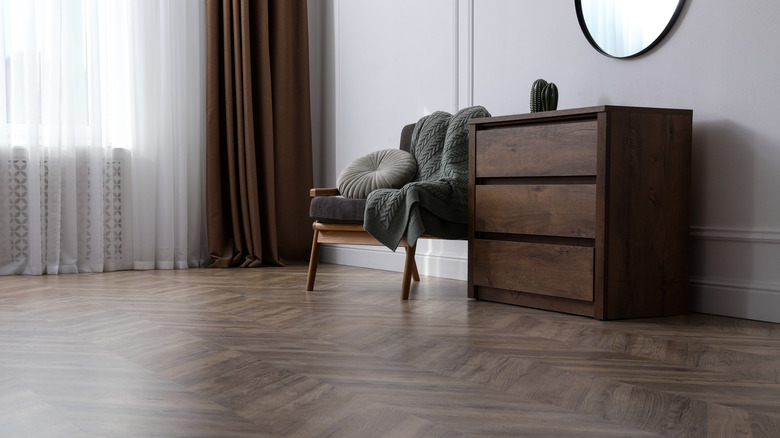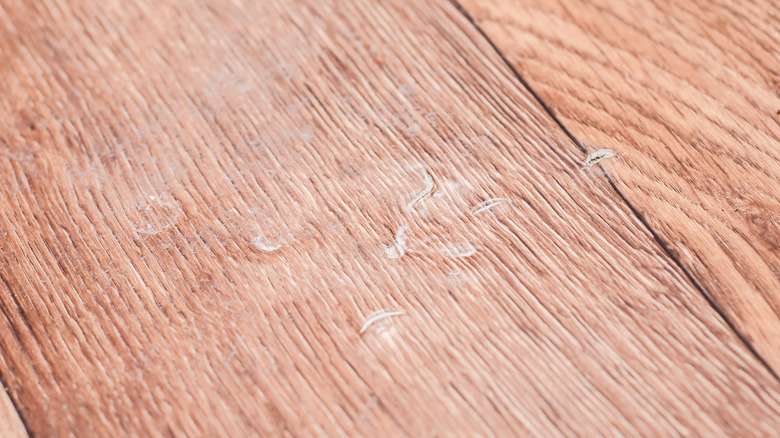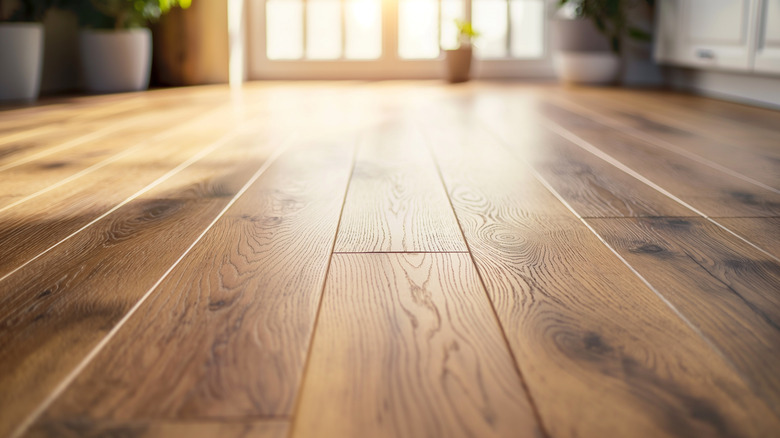The Major Downsides To Linoleum Flooring You Should Be Aware Of
If you're looking for budget-friendly ways to give your floors an upgrade, chances are you have been considering buying linoleum. At $2 to $5 per square foot, it tends to be one of the more budget-conscious flooring options on the market, especially when you compare it to hardwood and engineered hardwood. Plus, it's relatively scratch- and water-resistant and comes in an array of different styles. However, while linoleum has plenty of benefits, it also has its fair share of drawbacks. If you want to make an informed choice during your home renovation, it pays to understand some of linoleum's downsides.
Specifically, two of the major cons to linoleum flooring are that it's easy to dent and can change color over time depending on its exposure to sunlight. These are significant drawbacks for several reasons. First, it means you have to be relatively careful with the flooring. You can't walk around in high heels or carelessly move around heavy furniture. It also means you have allow the initial seasoning bloom to fade and keep an eye on your curtains and shades. If you don't, the flooring will begin to show its age in a way that hardwood, engineered hardwood, or tile wouldn't. Here is a closer look at the negative things to consider before installing linoleum flooring.
Linoleum might be scratch-resistant, but it's not dent-proof
If you're in the process of looking at linoleum flooring and have gone shopping at stores in-person, the flooring sales attendant may have demonstrated how scratch-resistant the planks are by running their keys across them. While this particular flooring type can hold up pretty well to shallow scratches — especially if you get a higher-end linoleum on the market– it is still susceptible to dents and deep scratches. That's because it's made from softer materials, so it isn't able to withstand concentrated pressure very well.
Linoleum is made from fully sustainable materials, but none of them are particularly dense. For instance, it's common for linoleum planks and sheets to be made from cork dust, finely ground wood product, and linseed oil on a canvas or burlap backing. While this combination makes a particularly soft and comfortable feeling underfoot, it's not strong enough to withstand heavy furniture or high heels. That means you have to be diligent about walking around sans shoes and commit to your furniture placement or else you'll have a room marked with bumps and indentations. This can also pose a problem for resale value when it's time to move out. Once all the furniture gets hauled out, sellers will be looking at bumpy and damaged flooring, so linoleum is one of the flooring types that could make it harder to sell your home.
It's prone to fading in the sunlight or yellowing in the darkness
Another downside to linoleum flooring is that it's also prone to fading if exposed to too much sunlight. UV rays have a tendency to fade anything that sits in their path for too long, whether that's hardwood, upholstery, or paintings, and linoleum is no different. If you have linoleum installed in a room with a south-facing window, you will have to be diligent about blocking the sun if you don't want your floors to start to fade.
Because of this, you will have to worry about drawing the blinds during peak hours, and also stress about moving your area rugs routinely to give the floor a chance to remain the same color since an outline will be left behind where sunlight hasn't been able to reach the floor beneath the rug. However, you might want to think twice about moving bulkier pieces of furniture, as that will create fresh dents.
While older floors deal with fading, new installations might display something called "seasoning bloom," which is a temporary yellow cast on the floor. This yellow cast will fade over time on its own, but you might want to wait until it does so before adding furniture or rugs on top. Covering the floor can make the yellow cast linger longer. While linoleum flooring is made to last 40 years, it will look quickly its age if its yellowed or faded, making it a bit too high-maintenance for some.


